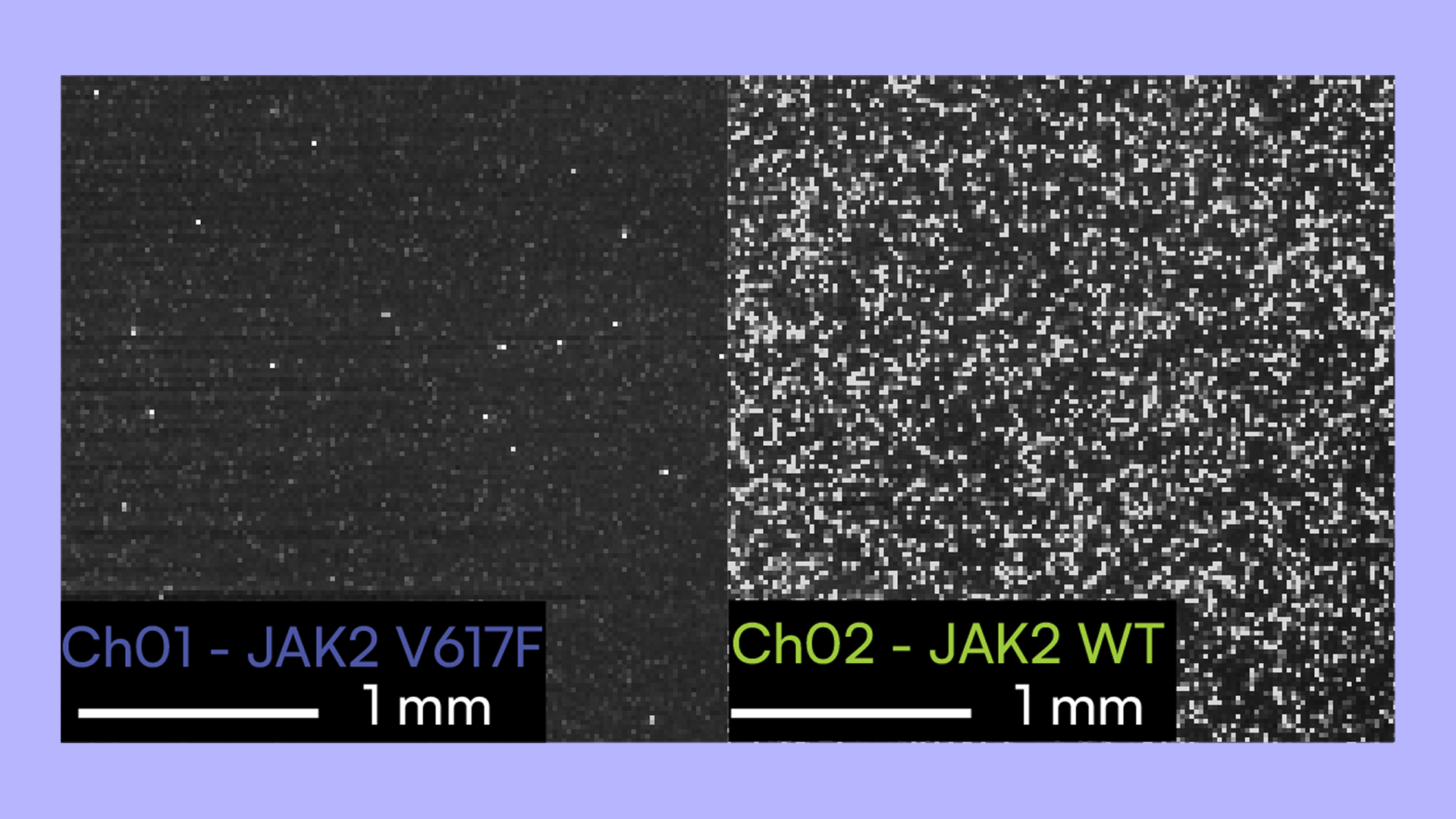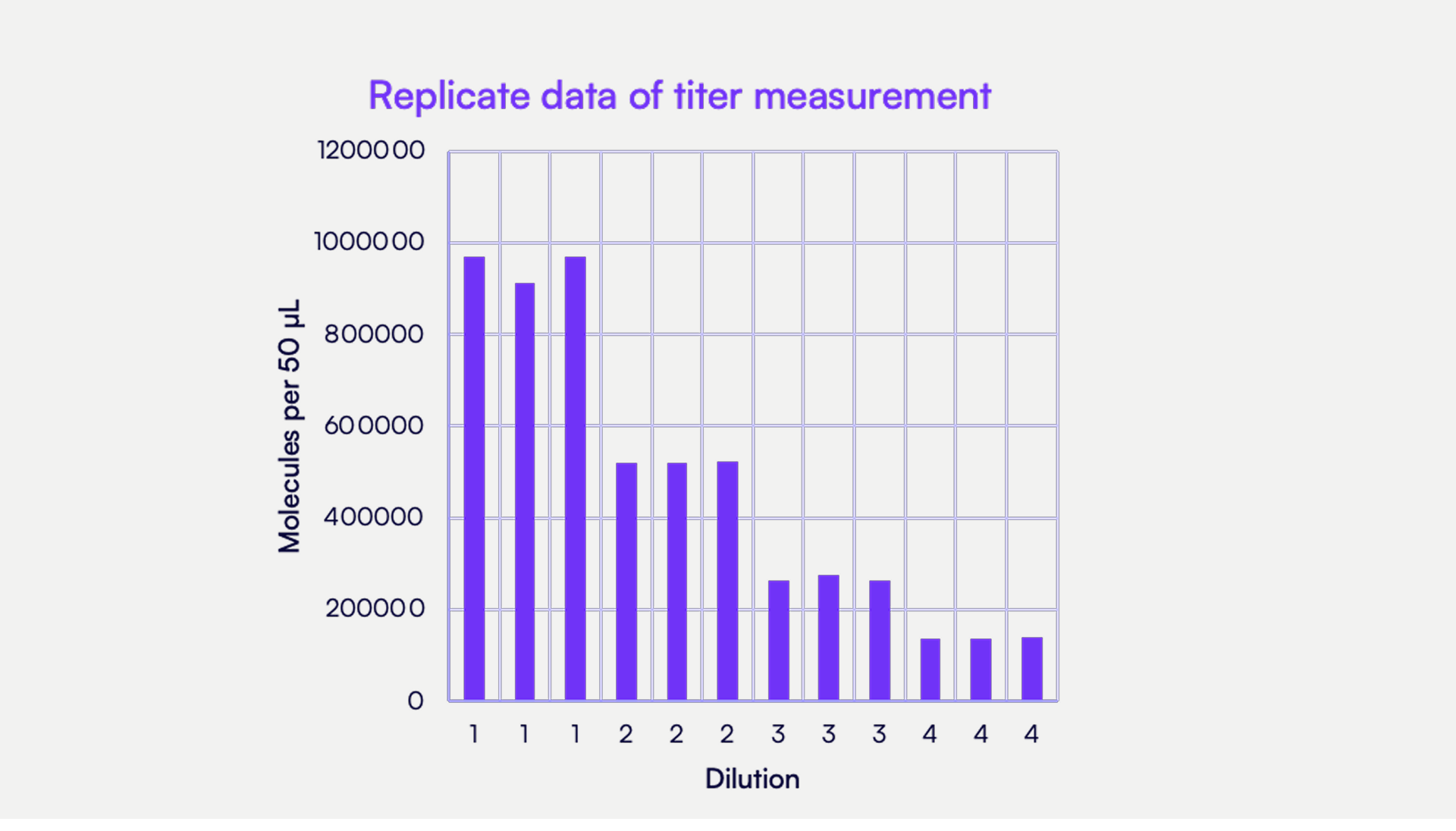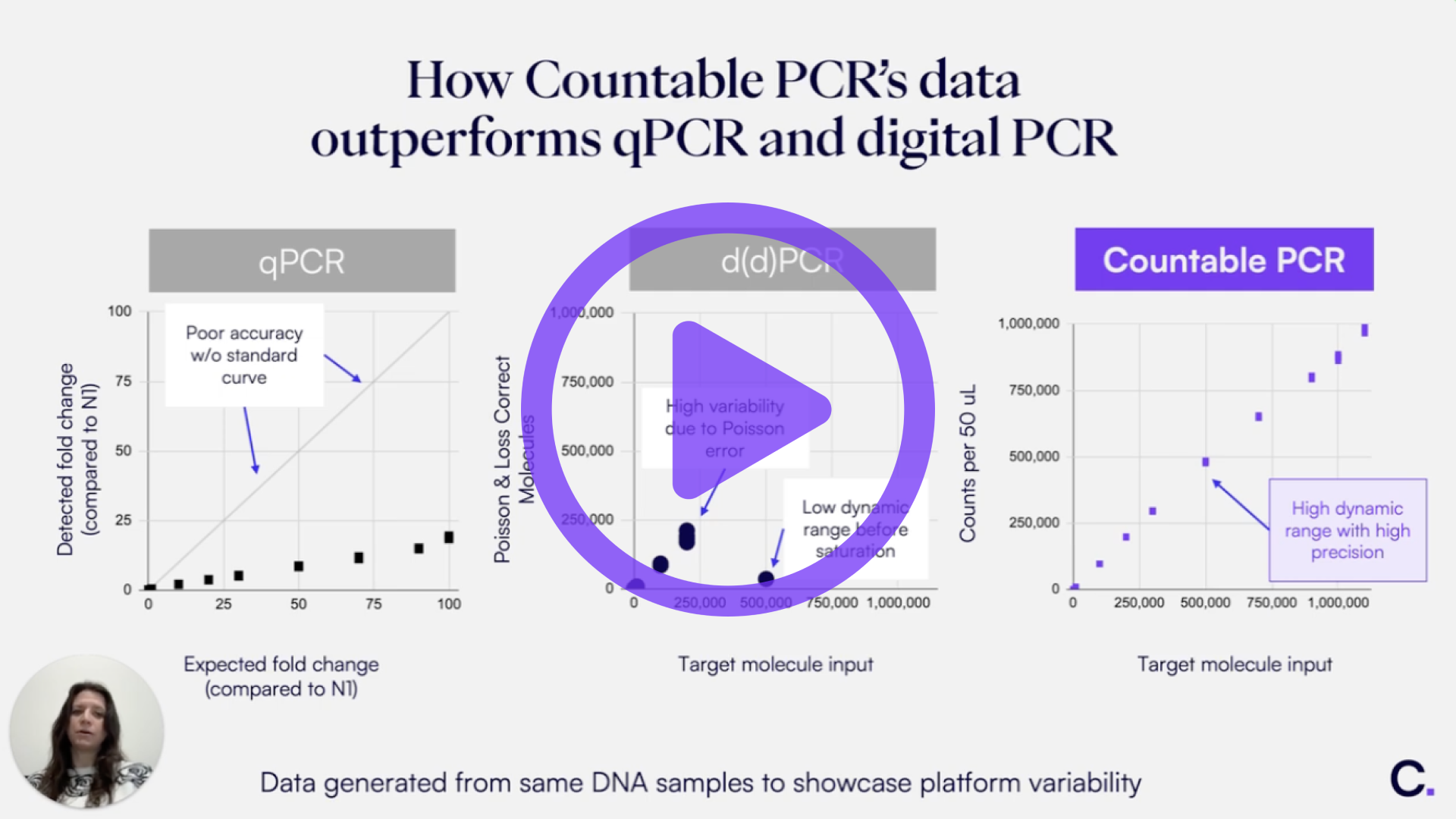The Challenge
Parker Wilson, MD, PhD, studies how DNA damage in different cell types acts as a hallmark for aging and chronic disease at the University of Pennsylvania. One particular cell type he studies are proximal tubule (PT) cells. These are the most abundant cell type in the kidney cortex — they’re critical for the reabsorption of water, ions, and small molecules like glucose and amino acids. They also have high energy demands, and as a result, have hundreds of mitochondria per cell.
Mitochondrial copy number (mtCN) and DNA damage have been implicated as a source of dysfunction and decreased efficiency or even apoptosis in many cell types, including heart and brain cells. Dr. Wilson’s lab investigates the relationship between mitochondrial DNA (mtDNA) and nuclear DNA content as a method of assessing the role of mtCN in kidney function and aging.
Traditional PCR platforms, like qPCR and digital PCR, lack the dynamic range and precision to simultaneously measure mtDNA and nuclear DNA in the same reaction, with high sensitivity. And mtDNA is present at up to hundreds of times greater levels compared to the diploid nuclear target – which presents challenges when trying to compare target presence within a single sample, even with NGS.

Enter Countable PCR
Dr. Wilson heard about Countable PCR from a colleague. Prior to trying out Countable PCR, his lab mainly focused on nuclear DNA, but they had interest in finding how mitochondrial DNA damage could also act as a disease indicator. However, mtDNA is present in far more abundance than gDNA. He realized quickly that it would be a great tool for probing his questions about how mtDNA changes with age because of its broad dynamic range, which would allow them to compare mtDNA and gDNA in the same experiment.
He and his team set up a multiplex experiment that targeted multiple mitochondrial regions alongside a nuclear genomic target (Rpp30) to use as a reference control. With Countable PCR, they now had the ability to study mitochondrial copy number and heteroplasmy in a single assay.
The Results
Dr. Wilson and his colleagues were able, for the first time ever, to normalize high- and low- abundance targets within a single reaction. This design makes it much easier to accurately quantitate mtDNA and opens new possibilities for studying how aging and kidney disease affect mitochondrial copy number.
Thanks to Countable PCR, they got:
- Accurate, direct counts of mitochondrial copies per cell, with comparison between high abundance mtDNA targets and low abundance target nuclear genome targets in the same reaction
- Lower variability in individual results, revealing subtle biological shifts not previously measured, including the initial increase in mtDNA counts associated with adolescence followed by a decline with age
- 4-target multiplex results without extensive optimization – three days to draw definitive conclusions about mitochondrial vs genomic DNA expression
Moving Forward
Dr. Wilson’s work highlights the power of Countable PCR to remove technical guesswork and make complex assays fast and accessible. With rapid turnaround, broad dynamic range, and accurate quantification, Countable PCR lets you move from idea to biological insight in days—not weeks. With the ability to compare mtDNA targets directly against their nuclear gene counterparts, this opens up new avenues for interrogating the relationship between mtCN and mtDNA damage in PT cells and beyond.
So what’s next for Dr. Wilson’s work? They’ll continue to carefully quantify the differences in DNA damage in both mtDNA and gDNA. They’ll connect this to their other work in the lab, studying the link between these damage profiles and senescence pathways at the single-cell level. Ultimately the goal is to target these pathways to prevent or reduce the impact of DNA damage from chronic disease or aging.
He sees the potential of Countable PCR to help with this and other work in the clinical diagnostics space. The broad dynamic range and the fact that it’s possible to directly quantify targets – without a standard curve – make it a great tool for accelerating research in this field.
About
Parker Wilson is an expert in NGS, with extensive experience in single-cell multiomics, researching how to use this information to fight disease and aging. Learn more about Dr. Wilson’s work here: www.parkerwilsonlab.com
The Challenge
Parker Wilson, MD, PhD, studies how DNA damage in different cell types acts as a hallmark for aging and chronic disease at the University of Pennsylvania. One particular cell type he studies are proximal tubule (PT) cells. These are the most abundant cell type in the kidney cortex — they’re critical for the reabsorption of water, ions, and small molecules like glucose and amino acids. They also have high energy demands, and as a result, have hundreds of mitochondria per cell.
Mitochondrial copy number (mtCN) and DNA damage have been implicated as a source of dysfunction and decreased efficiency or even apoptosis in many cell types, including heart and brain cells. Dr. Wilson’s lab investigates the relationship between mitochondrial DNA (mtDNA) and nuclear DNA content as a method of assessing the role of mtCN in kidney function and aging.
Traditional PCR platforms, like qPCR and digital PCR, lack the dynamic range and precision to simultaneously measure mtDNA and nuclear DNA in the same reaction, with high sensitivity. And mtDNA is present at up to hundreds of times greater levels compared to the diploid nuclear target – which presents challenges when trying to compare target presence within a single sample, even with NGS.

Enter Countable PCR
Dr. Wilson heard about Countable PCR from a colleague. Prior to trying out Countable PCR, his lab mainly focused on nuclear DNA, but they had interest in finding how mitochondrial DNA damage could also act as a disease indicator. However, mtDNA is present in far more abundance than gDNA. He realized quickly that it would be a great tool for probing his questions about how mtDNA changes with age because of its broad dynamic range, which would allow them to compare mtDNA and gDNA in the same experiment.
He and his team set up a multiplex experiment that targeted multiple mitochondrial regions alongside a nuclear genomic target (Rpp30) to use as a reference control. With Countable PCR, they now had the ability to study mitochondrial copy number and heteroplasmy in a single assay.
The Results
Dr. Wilson and his colleagues were able, for the first time ever, to normalize high- and low- abundance targets within a single reaction. This design makes it much easier to accurately quantitate mtDNA and opens new possibilities for studying how aging and kidney disease affect mitochondrial copy number.
Thanks to Countable PCR, they got:
- Accurate, direct counts of mitochondrial copies per cell, with comparison between high abundance mtDNA targets and low abundance target nuclear genome targets in the same reaction
- Lower variability in individual results, revealing subtle biological shifts not previously measured, including the initial increase in mtDNA counts associated with adolescence followed by a decline with age
- 4-target multiplex results without extensive optimization – three days to draw definitive conclusions about mitochondrial vs genomic DNA expression
Moving Forward
Dr. Wilson’s work highlights the power of Countable PCR to remove technical guesswork and make complex assays fast and accessible. With rapid turnaround, broad dynamic range, and accurate quantification, Countable PCR lets you move from idea to biological insight in days—not weeks. With the ability to compare mtDNA targets directly against their nuclear gene counterparts, this opens up new avenues for interrogating the relationship between mtCN and mtDNA damage in PT cells and beyond.
So what’s next for Dr. Wilson’s work? They’ll continue to carefully quantify the differences in DNA damage in both mtDNA and gDNA. They’ll connect this to their other work in the lab, studying the link between these damage profiles and senescence pathways at the single-cell level. Ultimately the goal is to target these pathways to prevent or reduce the impact of DNA damage from chronic disease or aging.
He sees the potential of Countable PCR to help with this and other work in the clinical diagnostics space. The broad dynamic range and the fact that it’s possible to directly quantify targets – without a standard curve – make it a great tool for accelerating research in this field.
About
Parker Wilson is an expert in NGS, with extensive experience in single-cell multiomics, researching how to use this information to fight disease and aging. Learn more about Dr. Wilson’s work here: www.parkerwilsonlab.com





